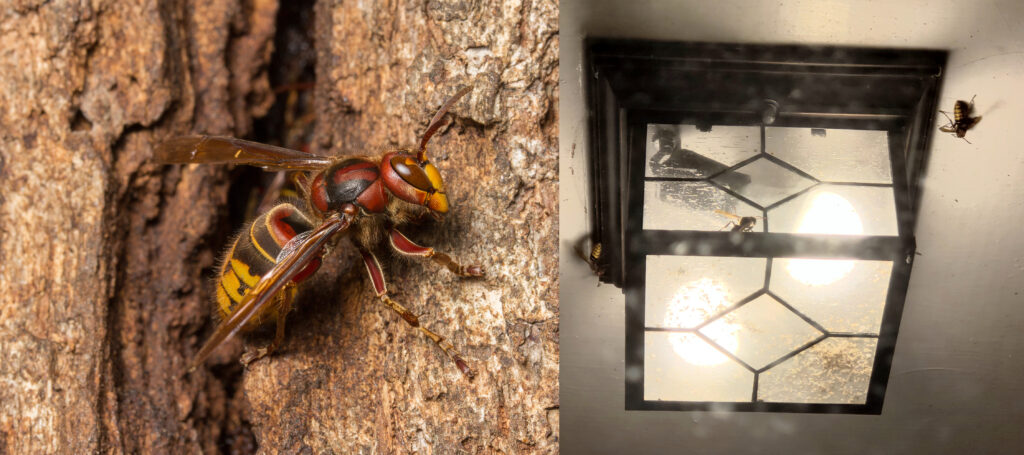Wasps at Porch Lights
go.ncsu.edu/readext?814414
en Español / em Português
El inglés es el idioma de control de esta página. En la medida en que haya algún conflicto entre la traducción al inglés y la traducción, el inglés prevalece.
Al hacer clic en el enlace de traducción se activa un servicio de traducción gratuito para convertir la página al español. Al igual que con cualquier traducción por Internet, la conversión no es sensible al contexto y puede que no traduzca el texto en su significado original. NC State Extension no garantiza la exactitud del texto traducido. Por favor, tenga en cuenta que algunas aplicaciones y/o servicios pueden no funcionar como se espera cuando se traducen.
Português
Inglês é o idioma de controle desta página. Na medida que haja algum conflito entre o texto original em Inglês e a tradução, o Inglês prevalece.
Ao clicar no link de tradução, um serviço gratuito de tradução será ativado para converter a página para o Português. Como em qualquer tradução pela internet, a conversão não é sensivel ao contexto e pode não ocorrer a tradução para o significado orginal. O serviço de Extensão da Carolina do Norte (NC State Extension) não garante a exatidão do texto traduzido. Por favor, observe que algumas funções ou serviços podem não funcionar como esperado após a tradução.
English
English is the controlling language of this page. To the extent there is any conflict between the English text and the translation, English controls.
Clicking on the translation link activates a free translation service to convert the page to Spanish. As with any Internet translation, the conversion is not context-sensitive and may not translate the text to its original meaning. NC State Extension does not guarantee the accuracy of the translated text. Please note that some applications and/or services may not function as expected when translated.
Collapse ▲In recent weeks we’ve been getting a lot of messages regarding large wasps coming to porch lights. In all of those cases, they were European hornets (Vespa crabro), but many were suspected to be Asian giant hornets (Vespa mandarinia, AKA “murder hornets”). The Asian giant hornet is not present in NC and we do not expect it to be any time soon, if at all. See this comparison page for more information on the differences between Asian giant hornets and similar looking local insects.
Hornets are social wasps that build large paper-like nests in cavities of trees, and sometimes, in or around human structures. Hornet activity begins in the spring with small colonies that get larger as the year goes on. At this time of year, hornet colonies are beginning to get very large (hundreds of individuals) and, consequently, there are more individuals present in the environment. Furthermore, the colonies are producing males and new queens that will mate, but only the mated queens overwinter to make new colonies the next year.
Some wasps (all hornets are wasps, but not all wasps are hornets) are attracted to lights, including European hornets, bald-faced hornets, and others. Due to the current seasonal increase in colony numbers, there are more individuals to home in on your home lights. This is why you have probably come across hornets near your porch light.
So what does this mean? Here are a few things to keep in mind:
- European hornets can fly a good distance from their nest, so this activity does not necessarily mean a colony is located nearby. Inspections of the area, perhaps following workers back to the nest (while giving them space) during the day, might be necessary to identify the source of the problem. Nests can sometimes be treated by homeowners, but often need to be professionally removed.
- Wasps are not likely to be overly aggressive near the lights, but it’s good to stay calm and give them a bit of room.
- Turning off lights at night will not only help reduce wasp numbers, but will also help reduce the deaths of countless other insects attracted to the lights.
For more information, please feel free to contact us!



